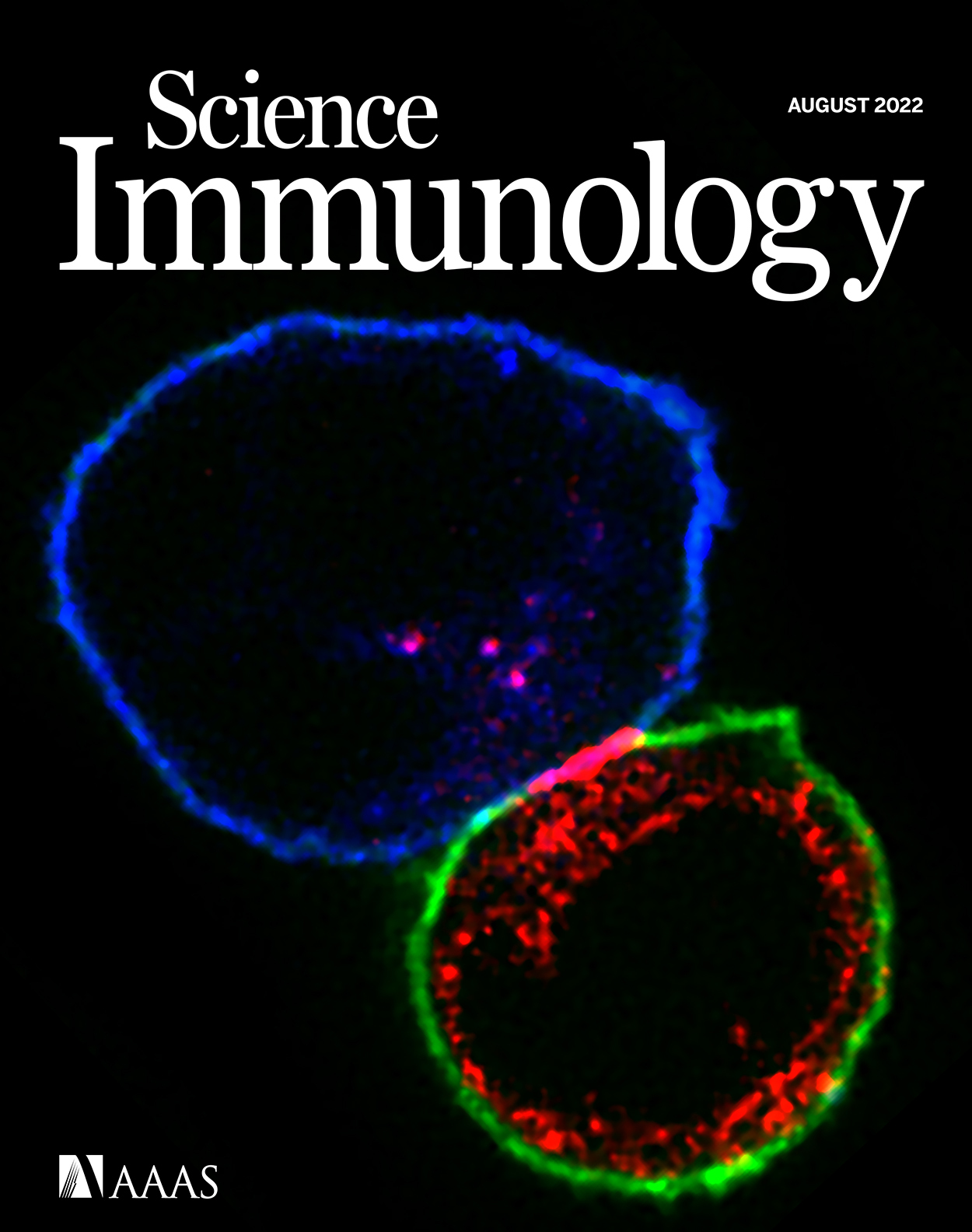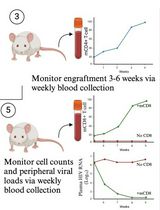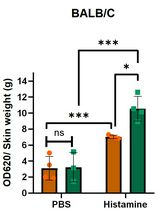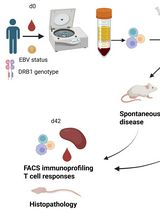- EN - English
- CN - 中文
Anti-tumor Efficacy of CD19 CAR-T in a Raji B Cell Xenografted Mouse Model
CD19 CAR-T在Raji B细胞异位移植小鼠模型中的抗肿瘤效果
发布: 2023年04月20日第13卷第8期 DOI: 10.21769/BioProtoc.4655 浏览次数: 3319
评审: Aleksei TikhonovShengwen Calvin LiAnonymous reviewer(s)
Abstract
Chimeric antigen receptor (CAR)-T therapy launched a new era for cancer treatments, displaying outstanding effectiveness in relapsed or refractory B-cell malignancies. Demonstrating the tumor-killing ability of CAR-Ts in mouse xenograft models serves as a golden criterium in preclinical research. Here, we describe a detailed method for evaluating CAR-T’s function in immune-deficient mice bearing Raji B cell–induced tumors. It includes generating CD19 CAR-T cells from healthy donors, injecting tumor cells and CAR-T cells into mice, and monitoring tumor growth and CAR-T state. This protocol provides a practical guide to evaluate CAR-T’s function in vivo within eight weeks.
Graphical overview

Background
Chimeric antigen receptor (CAR)-T-cell therapy exploits an antibody-dependent, major histocompatibility complex–independent antigen recognition paradigm to specifically target cancer cells using genetically engineered T cells. It is one of the most sought-after tools for treating hematologic malignancies (Daniyan and Brentjens, 2016; Posey et al., 2016). Recently, extensive studies have revealed the molecular mechanisms of CAR-T activation, such as charged lipids and ions–regulated CD28 conformation and signaling (Yang et al., 2017) and LAT-independent formation of CAR microclusters (Dong et al., 2020); SILAC-based phosphoproteomics revealed unique signaling circuits of CAR-Ts, and the distance of synapse from CAR-T/tumor cells was found to affect T-cell function (Xiao et al., 2022). Understanding CAR-T signaling further paved the way to develop new strategies to improve its function (Davenport et al., 2018; Majzner et al., 2020).
Generating CAR-Ts of high quality is a crucial step for validating their function in vitro and in vivo. Virus-based gene delivery systems are commonly used and can achieve high transduction efficiencies (Vormittag et al., 2018). Lentiviral and gamma-retroviral vectors are the most frequently used viral vector systems (Vannucci et al., 2013). Compared to retrovirus, which only infect proliferating cells, lentivirus could infect both proliferating and non-proliferating cells. Thus, lentivirus can infect a broader range of cell types than retroviruses. Meanwhile, lentiviruses need regulatory genes to neutralize the host's anti-viral response and regulate viral replication (Vannucci et al., 2013). They also require a large amount of plasmid for transient transfection to produce a high titer of lentivirus (Merten et al., 2016).
Immunodeficient mice (e.g., NSG, NOD.Cg-PrkdcscidIl2rgtm1Wjl/SzJl) are widely used to study the interactions between the human immune system and cancer. They offer a low-barrier platform for evaluating immunotherapeutic effects in the context of human immune cells and tumors (Shultz et al., 2014). Although some of those immunodeficient aged mice develop T and B cells, which causes the leakiness of immune cells (Allen et al., 2019), these mice are the gold standard host for engraftment of human tumors or for establishing human immune components following a hematopoietic stem cell transplant. Furthermore, they allow precise preclinical evaluations of antibody-based therapeutics, cancer vaccines, checkpoint inhibitor therapies, and adoptive cancer immunotherapies (Shultz et al., 2014). NSG mice xenografted with Raji (lymphoma) tumor cells are among the most used and recognized models for evaluating CAR-Ts' efficacy and toxicity targeting CD19 (Pegram et al., 2015; Majzner et al., 2020).
Here, we provide a detailed step-by-step protocol describing how to evaluate CD19 CAR-Ts tumor cell–killing effect in vivo. The protocol covers the generation of CD19 CAR-T cells from healthy donors, injection of tumor cells and CAR-T cells into mice, and monitoring of tumor growth and CAR-T state.
Materials and Reagents
T-25 or T-75 flask (Thermo Fisher, catalog number: 156499 or 156367)
15 mL conical centrifuge tubes (Thermo Fisher, catalog number: 14-959-53A)
50 mL conical centrifuge tubes (Thermo Fisher, catalog number: 14-959-49A)
Non-tissue culture–treated 24-well plates (Sigma, catalog number: CLS3738)
Tissue culture–treated 24-well or 6-well plates (StemCell, catalog number: 38017 or 38016)
Plastic wrap (GLAD Flex’N Seal Food Storage Plastic Bag)
1.5 mL polypropylene microcentrifuge tubes (Fisher Scientific, catalog number: 07-000-243)
5 mL polypropylene snaplock microcentrifuge tube (Fisher Scientific, catalog number: 14-568-101)
5 mL disposable pipettes (VWR, catalog number: 76201-710)
VWR individual tubes (FACS tube) (VWR, catalog number: 83009678)
1 mL syringe (Covidien, catalog number: 1180125158)
Alcohol prep pad (Dukal, catalog number: 853)
Blades (VWR, catalog number: 55411-050)
Micro-hematocrit capillary tubes (Thermo Fisher, catalog number: 22-363-566)
0.22 µm filter (Sigma Millipore, catalog number: GSWP04700)
NSG mice (NOD.Cg-PrkdcscidIl2rgtm1Wjl/SzJl) (The Jackson Laboratory, Strain #005557)
Cell line: Raji B cell (ATCC, catalog number: CCL-86)
Human peripheral blood mononuclear cells (PBMCs), FRESH (Zenbio, #SER-PBMC-200)
CD19 CAR constructs: pHR-SP-CD19 ScFv (FMC63) – myc-CD8 Stalk-CD8 (CD28-41BB-CD3) cyto-sfGFP (Su lab, plasmid #XSB848) (Xiao et al., 2022)
Lentiviral packaging plasmids (second generation): pMD2.G and psPAX2 (Addgene, #12259 and #12260)
Polybrene (Sigma, catalog number: H9268)
OKT-3 antibody (Thermo Fisher, catalog number: 11161D)
Recombinant human IL-2 (PeproTech, catalog number: 200-02)
1× Dulbecco’s phosphate buffered saline (DPBS) (Thermo Fisher, catalog number: 10010023)
GibcoTM HEPES (1 M) (Thermo Fisher, catalog number: 15-630-080)
1 mg/mL retronectin (Takara, catalog number: T100A/B, stock solution in DPBS)
BSA (Sigma, catalog number: A7030)
AIMV (Thermo Fisher, catalog number: 12055083)
RPMI 1640 (Thermo Fisher, catalog number: 11875093)
Human serum (GemCell, catalog number: 100-512)
Penicillin-Streptomycin-Glutamine (PSG) (Life Tech, catalog number: MT30009CI)
Heat-inactivated fetal bovine serum (FBS) (Life Tech, catalog number: 16140071)
PSG (Life Tech, catalog number: MT30009CI)
EDTA (Thermo Fisher, catalog number: 15-575-020)
Human TruStain FcXTM (Fc receptor blocking solution) (BioLegend, catalog number: 4223020)
Anti-human CD3 antibody (BD Biosciences, catalog number: 558117)
Anti-human CD8 antibody (BioLegend, catalog number: 344750)
Anti-human CD4 antibody (BioLegend, catalog number: 300508)
Anti-human CD279 (PD-1) antibody (BioLegend, catalog number: 621608)
Anti-human CD366 (Tim-3) antibody (BioLegend, catalog number: 345012)
Anti-human CD223 (LAG-3) antibody (BioLegend, catalog number: 345012)
Monoclonal Anti-FMC63 scFv antibody (ACROBiosystems, catalog number: FM3-Y45)
Red blood cell lysing buffer (Sigma, catalog number: R7757-100ML)
UltraComp eBeads Plus compensation beads (Thermo Fisher, catalog number: 01-3333-42)
Matrigel (VWR, catalog number: 47743-716)
DPBS/2% BSA (see Recipes)
T-cell culture media (T-cell media) (see Recipes)
Cell culture media for Raji B cells (Raji media) (see Recipes)
FACS staining buffer (see Recipes)
Equipment
Water bath (Thermo Scientific Precision, model: UX-12150-00)
Cell culture incubator, 37 °C with 5% CO2 (Thermo Fisher, catalog number: 51033776)
Flow cytometer analyzer (BD, LSR II Flow Cytometer or Thermo Fisher, Attune Flow Cytometers)
Centrifuge with a swinging rotor and plate holder (Thermo Fisher, catalog number: 75009210)
Digital Electronic Caliper (Fine Science Tools, catalog number: 30087-00)
EasySepTM Magnet (StemCell, catalog number: 18000)
Automated Cell Counters (Thermo Fisher, model: Countess 3)
Software
FlowJo software (BD, https://www.flowjo.com/solutions/flowjo)
Prism software (GraphPad by Dotmatics, https://www.graphpad.com/)
Procedure
文章信息
版权信息
© 2023 The Author(s); This is an open access article under the CC BY-NC license (https://creativecommons.org/licenses/by-nc/4.0/).
如何引用
Readers should cite both the Bio-protocol article and the original research article where this protocol was used:
- Xiao, Q. and Su, X. (2023). Anti-tumor Efficacy of CD19 CAR-T in a Raji B Cell Xenografted Mouse Model. Bio-protocol 13(8): e4655. DOI: 10.21769/BioProtoc.4655.
- Xiao, Q., Zhang, X., Tu, L., Cao, J., Hinrichs, C. S. and Su, X. (2022). Size-dependent activation of CAR-T cells. Sci Immunol 7(74): eabl3995.
分类
免疫学 > 动物模型 > 小鼠
您对这篇实验方法有问题吗?
在此处发布您的问题,我们将邀请本文作者来回答。同时,我们会将您的问题发布到Bio-protocol Exchange,以便寻求社区成员的帮助。
Share
Bluesky
X
Copy link













